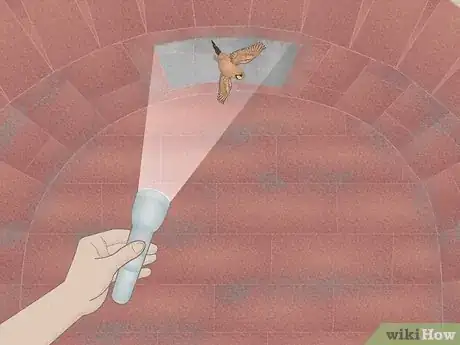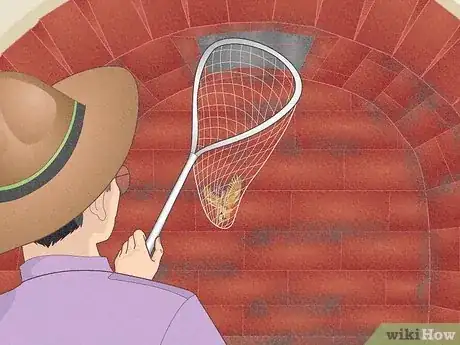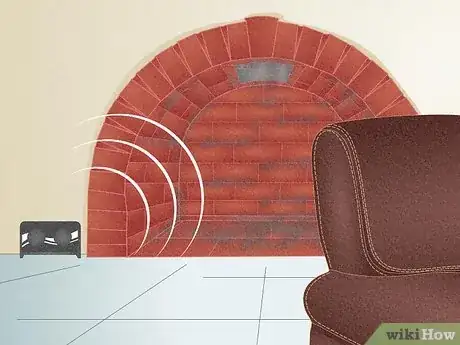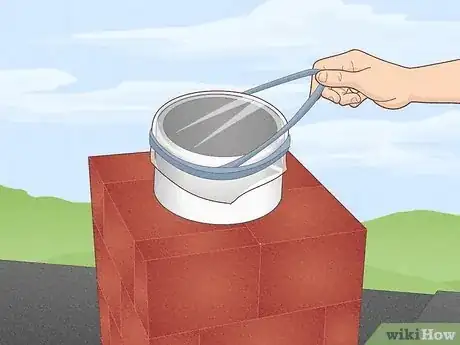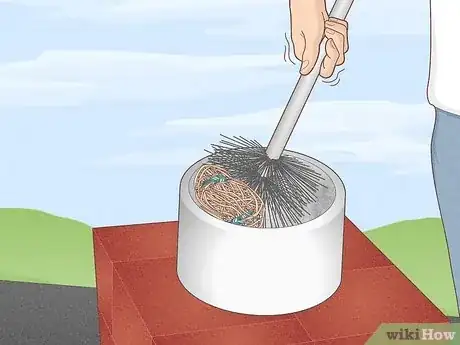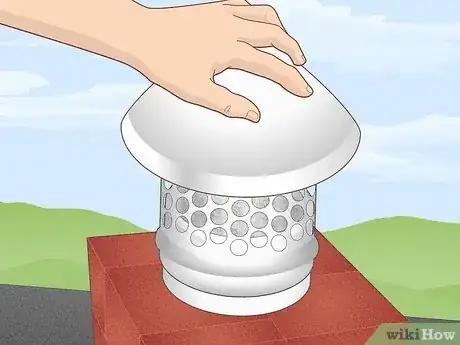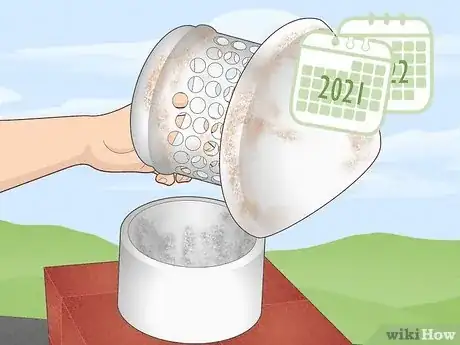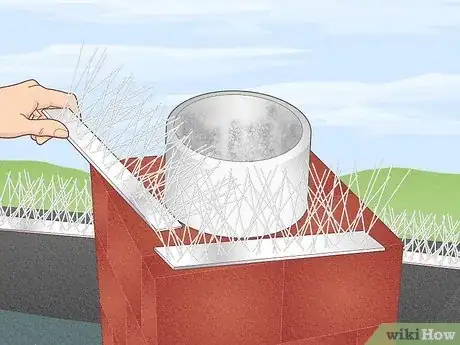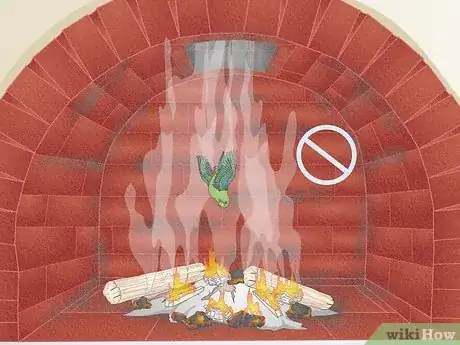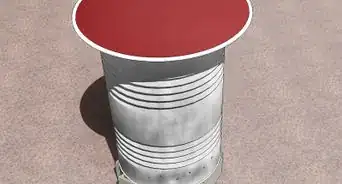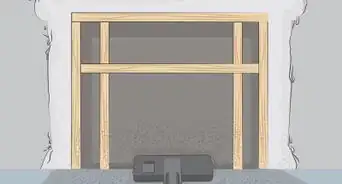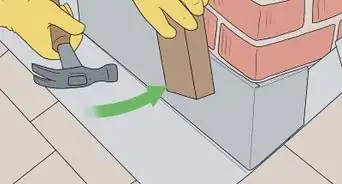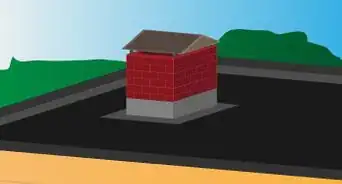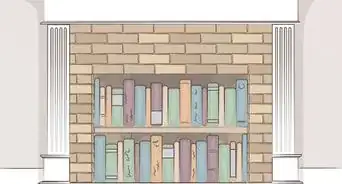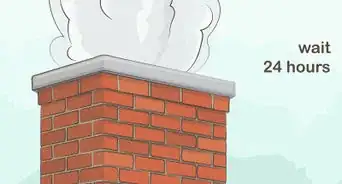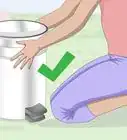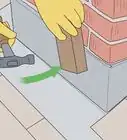This article was co-authored by Elmer Bensinger and by wikiHow staff writer, Jennifer Mueller, JD. Elmer Bensinger is a Pest Control Specialist with Eden Advanced Pest Technologies in Spokane, Washington. With over 20 years of experience, Elmer specializes in integrated pest management and products such as insecticides and rodenticides. He studied business at South Puget Sound Community College.
This article has been viewed 3,783 times.
You hear fluttering and chirping coming from your chimney—sounds like you've got a bird (or several) in there. So how do you get them out? A fully feathered adult will likely fly out on its own if you show it the way. If you've got a whole nest, though, you'll probably have to wait. Chances are, the birds are legally protected and can't be touched or moved. After the birds have abandoned your chimney, take preventive measures to ensure they don't return.[1]
Things You Should Know
- Shine a light into the chimney to help adult birds escape on their own.
- For nests, try to scare birds off with loud noises. If that doesn't work, close the flue and let them stay through the season or call local wildlife rescue.
- Avoid using your fireplace until the birds are gone and the nest is removed from the chimney.
- Chimney caps and bird spikes prevent birds from getting into your chimney.
Steps
Helping a Stuck Bird
-
1Try to scare the birds away with loud noises. If you hear flapping or thumping sounds coming from your chimney, bang some pots and pans together near the fireplace—it might work its way back out the top. Birds hate loud noises and will try to get as far away from them as possible. It's not the nicest thing, but it can sometimes do the trick.
- This likely won't work with larger adult birds because they can't open their wings enough to fly out.[2]
-
2Shine a flashlight to coax the bird down the chimney. If the bird can't go up the chimney, it might be able to come down. Block off the room where your fireplace is and turn off all the inside lights. Then, open the doors and windows. Open the flue damper and shine your flashlight from the side of the chimney. The bird should see the light coming from below and head down and outside.[3]
- If the bird isn't injured, once it gets into the fireplace it will see the open doors and windows and make a break for it.
- If the bird is injured, toss a towel over it, then pick it up and place it in a box. Call a local vet or wildlife rescue to help the bird.
- Never dump an injured bird outside. The International Wildlife Rehabilitation Council has a global directory of wildlife rehabilitators you can use to find a wildlife rescue near you.
Advertisement -
3Call a wildlife rehabilitator if you can't get the bird out. It can be potentially dangerous to try to reach up in your chimney and dislodge a bird that's stuck—let the pros handle something like that. Call a local wildlife rescue and someone will come out to help you.
- While you could potentially call a pest control service or a chimney sweep, a wildlife rescue is your better option. Their job is to care for the bird and—perhaps more importantly—they won't charge you for their services.
Dealing with Nests
-
1Use sound or scent deterrents to convince birds to move. An ultrasonic bird repeller device will emit ultrasonic sounds that birds can hear but you can't—so you don't have to sacrifice your own peace and quiet. You might also try a bird repellent spray in and around your chimney.[4]
- Birds are opportunistic creatures. These deterrents might keep birds from nesting in your chimney by making it seem less convenient or attractive to them.
- Scent and sound deterrents don't work forever, but they can convince the bird to find a better place to lay its eggs so you have time to put more permanent preventive measures in place.
-
2Isolate an active nest so the birds don't get into your house. Close your flue so that no bird droppings or other debris falls down into your fireplace. You might also tape a garbage bag over the fireplace opening—it'll keep the birds out of your home and also serve as a good reminder not to use the fireplace for the time being.[5]
-
3Call a chimney sweep to remove the nest in the fall. Migratory birds typically abandon their nests in the early fall. The fledglings have all left and the nest is safe to remove. A professional chimney sweep will remove the nesting materials and bird droppings so that your fireplace is safe to use.[6]
- In some areas, only wildlife control professionals can remove nests of protected bird species, even if they're already empty or abandoned. Your chimney sweep will let you know if this is the case where you live.
- Migratory birds don't reuse the same nests, and they don't necessarily return to the same spot to nest every year—but they will if it's convenient. Talk to your chimney sweep about permanent preventive measures that will keep them from coming back.
Keeping Birds Out of Your Chimney
-
1Install a chimney cap to keep birds from going into your chimney. You can install a chimney cap yourself—just measure the chimney to make sure it fits properly. If you don't feel comfortable going up on your roof, a chimney sweep will do it for you.[7]
- For extra protection, cover the opening of the chimney with a 1⁄4 in (0.64 cm) mesh screen to keep the birds out.
- Chimney caps also protect your chimney from the elements, so they're just generally a good thing to have—especially if you use your fireplace on a regular basis during cooler weather.
-
2Get your chimney and cap inspected every year. Birds can get through even the smallest crack in a chimney cap. Have yours inspected for damage every year in the spring. That way you can make repairs before the migratory birds return.[8]
- Set a regular appointment with your favorite chimney sweep to come every year to clean and inspect your chimney and cap, and you won't have to worry about birds nesting there.
- Regardless of whether you have birds, clean your chimney at least once a year so you can continue to use your fireplace safely.
-
3Use bird spikes to keep birds off of your roof completely. Bird spikes are stainless steel spikes that you can install on your roof and around your chimney. Because they prevent birds from roosting on your roof, the birds will also be unlikely to venture down your chimney.[9]
- Bird spikes keep all birds off of your roof, not just the ones that are likely to end up in your chimney. Chimney caps are a more selective option in that they just keep the birds out of your chimney but allow them to land on your roof.
Warnings
- Don't use your fireplace while there are birds or nesting materials in your chimney. You could cause a house fire.[12]⧼thumbs_response⧽
- Many birds that nest in chimneys are protected by law, meaning you aren't legally allowed to touch the bird or the nest. Consult an expert before you attempt to remove birds to make sure they aren't a protected species.⧼thumbs_response⧽
References
- ↑ https://www.rspca.org.uk/adviceandwelfare/wildlife/animalsinthewild/birds/trappedbirds
- ↑ https://www.allaboutbirds.org/news/it-sounds-like-there-are-birds-stuck-in-my-chimney-what-should-i-do/
- ↑ https://www.allaboutbirds.org/news/it-sounds-like-there-are-birds-stuck-in-my-chimney-what-should-i-do/
- ↑ https://escholarship.org/uc/item/33s6p09d
- ↑ https://www.csia.org/homeowner-resources/what-to-do-when/
- ↑ https://www.csia.org/homeowner-resources/what-to-do-when/
- ↑ https://www.csia.org/homeowner-resources/what-to-do-when/
- ↑ https://www.csia.org/homeowner-resources/what-to-do-when/
- ↑ https://escholarship.org/uc/item/33s6p09d
- ↑ https://www.allaboutbirds.org/news/it-sounds-like-there-are-birds-stuck-in-my-chimney-what-should-i-do/
- ↑ https://www.allaboutbirds.org/news/it-sounds-like-there-are-birds-stuck-in-my-chimney-what-should-i-do/
- ↑ https://www.allaboutbirds.org/news/it-sounds-like-there-are-birds-stuck-in-my-chimney-what-should-i-do/

